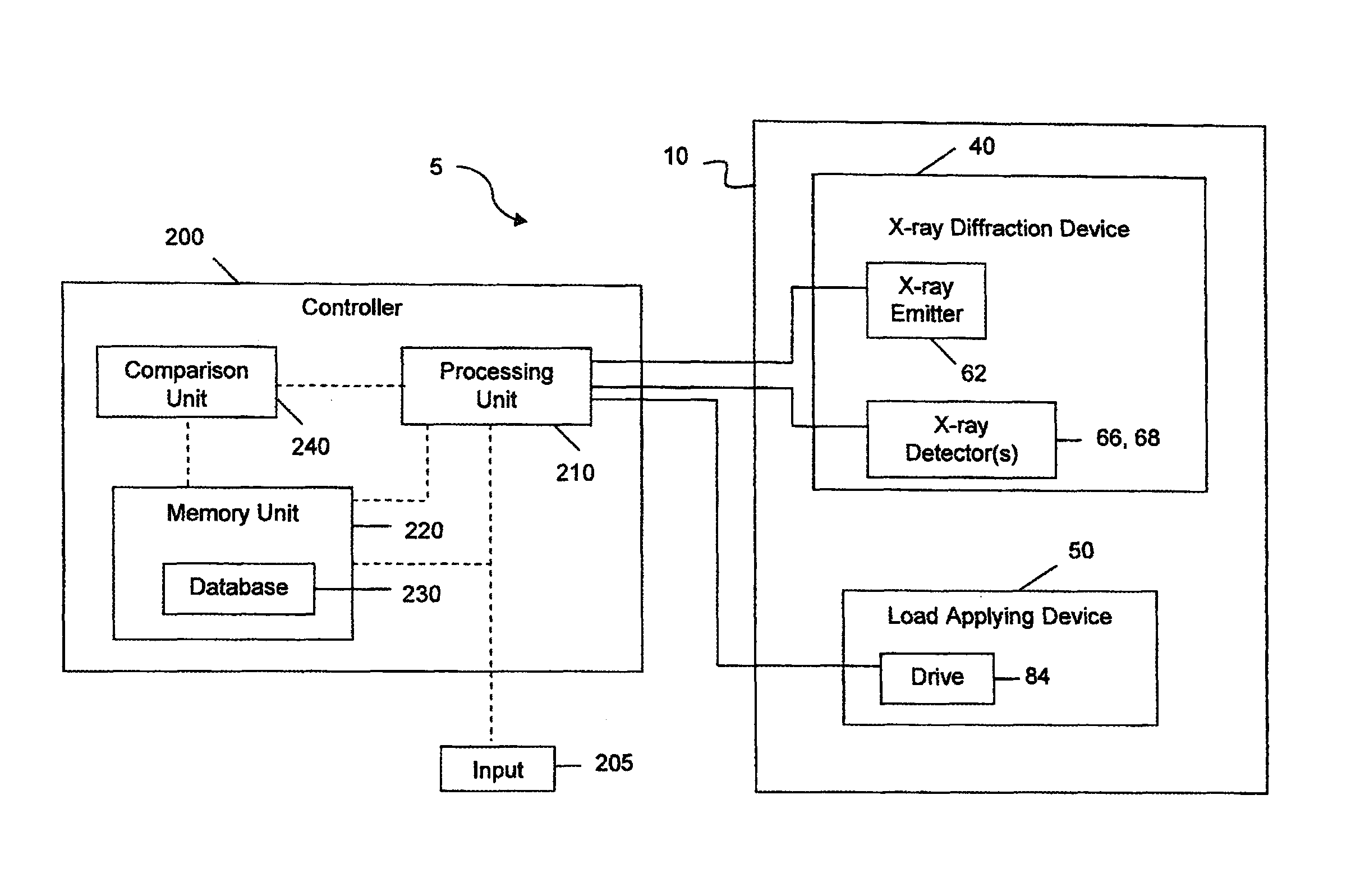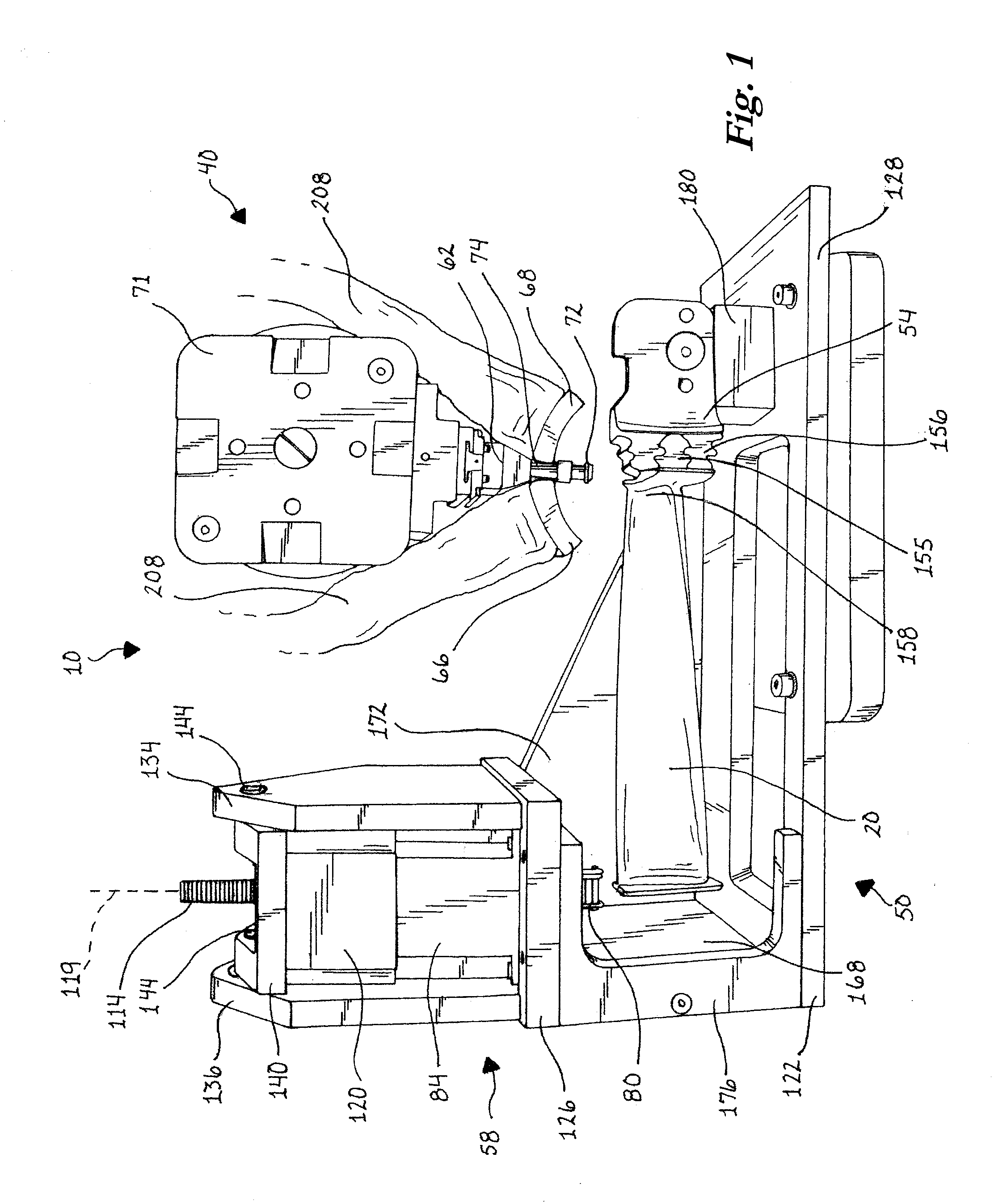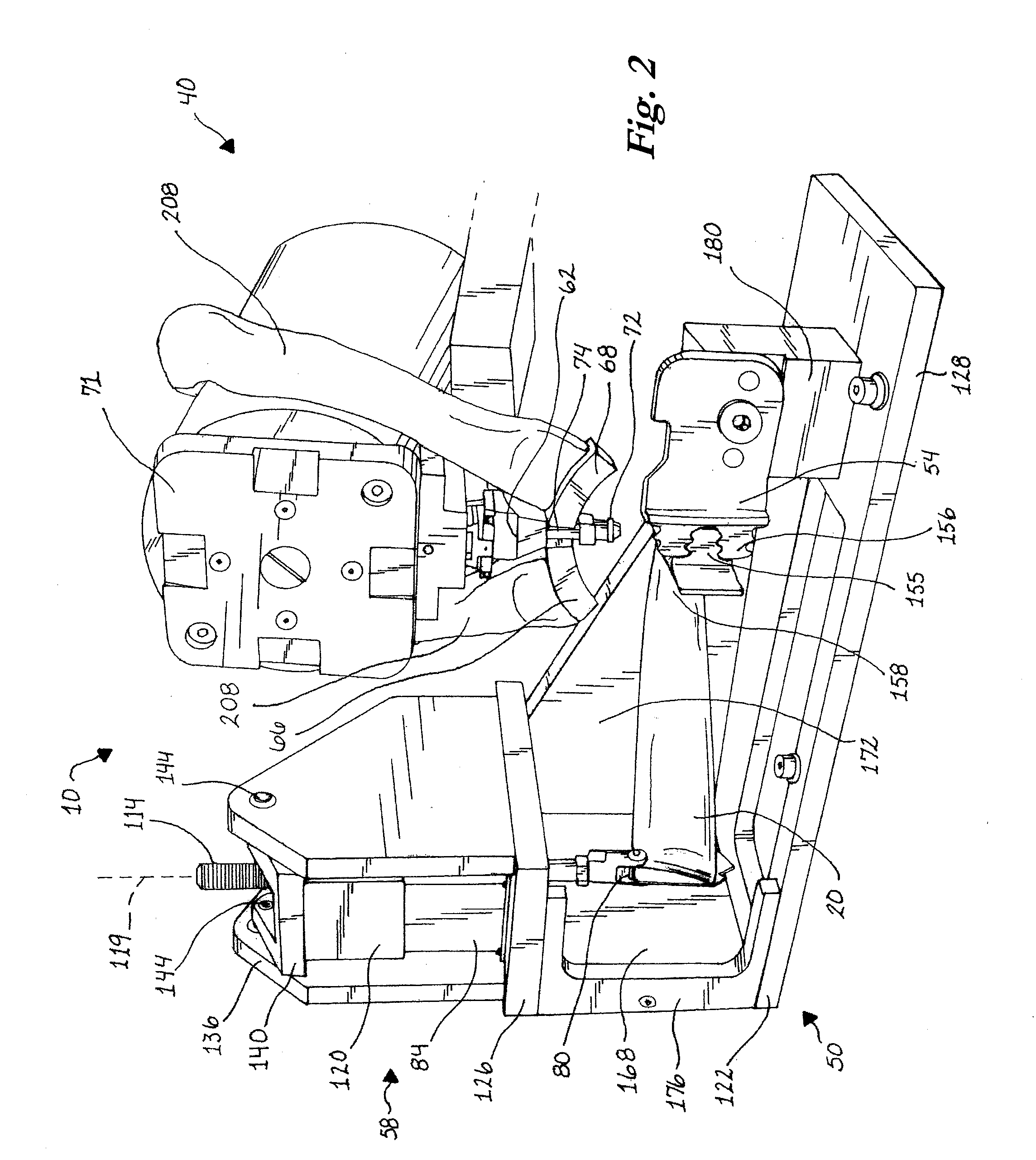Non-destructive testing systems and methods
a testing system and non-destructive technology, applied in the direction of material analysis using wave/particle radiation, instruments, specific gravity measurement, etc., can solve the problems of not being able to directly test the orientation angle of the underlying material, and certain materials of an article may not be available for direct analysis by conventional methods without destructively modifying the articl
- Summary
- Abstract
- Description
- Claims
- Application Information
AI Technical Summary
Benefits of technology
Problems solved by technology
Method used
Image
Examples
Embodiment Construction
[0044]Referring FIGS. 1-4, an x-ray diffraction system 5 including an x-ray diffraction apparatus 10 for analyzing a representative article 20 in accordance with the present invention is illustrated. The article 20, as depicted in FIG. 8A, may, for example, be a rotor blade for use in a turbine. The blade 20, as shown in cross-section in FIG. 8B, is depicted as having two materials. The main body 22 of the blade 20 is a crystalline material, such as a SX material or DS material as previously described. These materials are widely used when low weight and certain material characteristics, such as high strength characteristics, are important. The crystalline material 22 has a further material characteristic, namely grain orientation, which when properly aligned with the highest stress direction of the article 20 provides an article with a greater amount of stress resistance than if the grain orientation was out of alignment with the proper alignment. Further, as strength, elastic, and ...
PUM
| Property | Measurement | Unit |
|---|---|---|
| thickness | aaaaa | aaaaa |
| deflection distances | aaaaa | aaaaa |
| crystal orientation angles | aaaaa | aaaaa |
Abstract
Description
Claims
Application Information
 Login to View More
Login to View More - R&D
- Intellectual Property
- Life Sciences
- Materials
- Tech Scout
- Unparalleled Data Quality
- Higher Quality Content
- 60% Fewer Hallucinations
Browse by: Latest US Patents, China's latest patents, Technical Efficacy Thesaurus, Application Domain, Technology Topic, Popular Technical Reports.
© 2025 PatSnap. All rights reserved.Legal|Privacy policy|Modern Slavery Act Transparency Statement|Sitemap|About US| Contact US: help@patsnap.com



